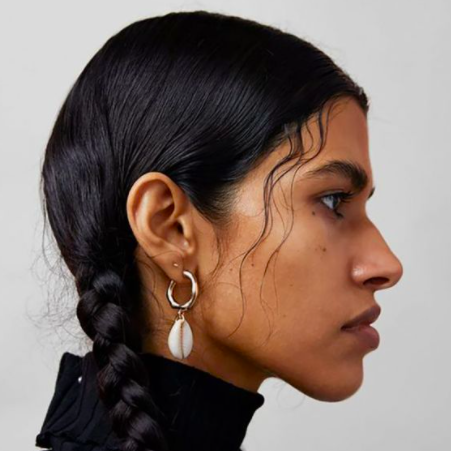Just Because There Aren't As Many Posts Of Blm Circulating And Just Because We're Slowly Posting Regular
just because there aren't as many posts of blm circulating and just because we're slowly posting regular "aesthetic" content again it does not mean you have the right to stop educating yourself on issues that affect black people. continue to educate yourself and others, call out racism when you see it and continue to donate and sign petitions. activism that only occurs when somebody dies or something devastating happens is not proper activism, it is performative. so, just because you aren't posting as much about blm or other issues anymore, it does NOT mean you can go back to being ignorant. continue to stay aware. keep that energy and use it and your privilege to help black people and amplify their voices. us non-black people need to recognise that choosing when to speak up or speaking up when it is big is a privilege and is ignorant and we need to fix this.
More Posts from Ieatstories and Others
I have never in my life wanted to get to know stars, the night sky or anything related to astronomy. Space was never something I was interested in. But this is so beautiful and interesting, I can’t even look away.


Sometimes… there’s more than meets the eye. 👀 You’re looking at two very different takes on an iconic image.
Human eyes can see only a small portion of the range of radiation given off by the objects around us. We call this wide array of radiation the electromagnetic spectrum, and the part we can see visible light.
In the first image, researchers revisited one of Hubble Space Telescope’s most popular sights: the Eagle Nebula’s Pillars of Creation. Here, the pillars are seen in infrared light, which pierces through obscuring dust and gas and unveil a more unfamiliar — but just as amazing — view of the pillars. The entire frame is peppered with bright stars and baby stars are revealed being formed within the pillars themselves. The image on the bottom is the pillars in visible light.
Image Credit: NASA, ESA/Hubble and the Hubble Heritage Team
Make sure to follow us on Tumblr for your regular dose of space: http://nasa.tumblr.com.
How do you live in a real world when your mind is constantly drifting away to the fantasy. How can you stay awake, how can you love this world, how can you find love in this reality, when everything sounds so desperately dull? I'm asking for a friend.
“At an early age I learned that people make mistakes, and you have to decide if their mistakes are bigger than your love for them.”
— The Hate U Give by Angie Thomas
Academic writing advice inspired by Umberto Eco’s ‘How to Write a Thesis’:
Planning
Determine primary sources/bibliography.
Determine secondary sources/bibliography.
Find title.
Brainstorm a table of contents with as much detail as possible (with chapters, sections and even paragraphs and sub-paragraphs - see How to Write a Thesis’ own table of contents as an example at the end of this document) (if the first drafted table of contents is good enough, it will not be necessary to start the writing from the beginning).
Do a first draft of the introduction.
Note-taking and research
Use Google Scholar to make sure you do not miss important sources.
Keep the table of contents in mind when researching and take notes of which sources could go where.
While note-taking, differentiate which parts could be used as quotations from the ones that are simply important for the argument.
Eco underlines the importance of what he calls reading sheets, which can be understood as your notes on your readings. According to him, these should contain:
information about the author if he is not a well-known figure;
a brief (or long) summary;
they should mostly consist of quotations (accompanied by all the corresponding page numbers)
any commentaries you might want to add;
an indication of which part (or parts) of your table of contents the information mentioned belongs to.
Keep reading sheets on primary sources (which should be the longest) separate from those on secondary sources (which should only be 1-2 pages long).
In the end, re-read the notes and color-code all the different parts according to where they would fit in your table of contents.
Writing and editing
A good place to start would be by redrafting the introduction.
Define every key/technical term used/mentioned unless indisputably obvious.
General writing tips:
keep sentences short;
do not be afraid to repeat the subject twice (ex: Roberta went to the shop (…) Roberta bought carrots and tomatoes);
avoid excessive details;
avoid subordinate clauses (orações subordinadas);
avoid vague language;
avoid unnecessary adjectives;
avoid the passive voice.
While drafting, write everything that comes to mind. Leave the editing for the end.
Use your tutor as a Guinea pig. Make them read your first chapters (and, progressively, all the rest) well before delivery is due.
Ask for as much feedback as possible. Ask colleagues, friends and/or family to read your work. They will provide you with more diversified feedback, as well as allowing you to know if your writing is clear to anyone.
Stop playing ‘solitary genius’.
Don’t insist on starting with the first chapter. Start with what you know best and feel more comfortable writing about, then fill in the gaps.
Leave time for editing and try to take at least a one or two days long break in between writing and editing.
Do not forget to fill in the gaps. When you revisit your writing, go through it with all these writing tips in mind as well as a conscience of what your most common mistakes are.
Use Hemingway in the final editing phase.
Quotations and footnotes
Since there are two kinds of sources (primary and secondary), there are also two kinds of quotations: either we quote a text which we will interpret, or we quote a text which supports your interpretation.
Some quotation rules to know:
“Quote the object of your interpretive analysis with reasonable abundance.”
“Quote the critical literature only when its authority corroborates or confirms your statements. (…) when quoting or citing critical [aka secondary] literature, be sure that it says something new, or that it confirms authoritatively what you have said.”
“If you don’t want readers to presume that you share the opinion of the quoted author, you must include your own critical remarks before or after the passage.”
“Make sure that the author and the source of your quote are clearly identifiable.”
“When a quote does not exceed two or three lines, you can insert it into the body of the text enclosed in quotation marks. (…) When the quote is longer, it is better to set it off as a block quotation. In this case the quotation marks are not necessary, because it is clear that all set-off passages are quotes, and we must commit to a different system for our observations. (Any secondary developments [like the quote’s reference] should appear in a note.) (…) This method is quite convenient because it immediately reveals the quoted texts; it allows the reader to skip them if he is skimming, to linger if he is more interested in the quoted texts than in our commentary, and finally, to find them immediately when need be.”
Some footnote rules to know:
“Use notes to add additional supporting bibliographical references on a topic you discuss in the text. For example, ‘on this topic see also so-and-so.’”
“Use notes to introduce a supporting quote that would have interrupted the text. If you make a statement in the text and then continue directly to the next statement for fluidity, a superscript note reference after the first statement can refer the reader to a note in which a well-known authority backs up your assertion.”
“Use notes to expand on statements you have made in the text. Use notes to free your text from observations that, however important, are peripheral to your argument or do nothing more than repeat from a different point of view what you have essentially already said.”
“Use notes to correct statements in the text. You may be sure of your statements, but you should also be conscious that someone may disagree, or you may believe that, from a certain point of view, it would be possible to object to your statement. Inserting a partially restrictive note will then prove not only your academic honesty but also your critical spirit.”
“Use notes to provide a translation of a quote, or to provide the quote in the original language.”
✨women✨❤️









beautiful profiles
hayett mccarthy / mona tougaard / heather kemesky / günze gözütok / unknown / sabrina impacciatore / rossy de palma / pooja mor / alba flores
Honestly, me everyday.
Ravenclaw: I need a break.
Gryffindor: From what?
Ravenclaw: *vaguely gestures*
Gryffindor: Same.
How magical it would be to be in love with a woman during this slow afternoon...


To what? For me and Mina to… What are you saying? Oh my God!
actually i love growing older and learning how i work as a person like realizing what kinds of fabrics feel best on my skin or what brand of yogurt i like best or how I want to be touched. watching myself change, enjoying brussel sprouts when I used to hate them as a child, understanding why I got angry in that one conversation 10 years ago… there are so many mysteries inside me that i have yet to unravel and there will always be more and sometimes i think maybe its all worth it
Today I saw a girl from my balcony. There was a little creature on the pavement. I don't know what it was, maybe a frog or a lizard. She stopped, watched the creature for five minutes or more, until it disappeared in the safety of grass. I like girls so much.
I want a cat so much, but I also know, that I want to change countries in a few years and I don't know what would I do with her.
But I want a cat. So for now, this is an appreciation post about cats in cute surroundings. Enjoy. 🙏




-
 annafcivp liked this · 6 months ago
annafcivp liked this · 6 months ago -
 carpetsh4rk liked this · 1 year ago
carpetsh4rk liked this · 1 year ago -
 wh0sthe5pecial0ne liked this · 2 years ago
wh0sthe5pecial0ne liked this · 2 years ago -
 vapmires liked this · 2 years ago
vapmires liked this · 2 years ago -
 flamelo liked this · 2 years ago
flamelo liked this · 2 years ago -
 love-and-be-loved reblogged this · 2 years ago
love-and-be-loved reblogged this · 2 years ago -
 love-and-be-loved liked this · 2 years ago
love-and-be-loved liked this · 2 years ago -
 waterinaboxx liked this · 3 years ago
waterinaboxx liked this · 3 years ago -
 starzii reblogged this · 3 years ago
starzii reblogged this · 3 years ago -
 starzii liked this · 3 years ago
starzii liked this · 3 years ago -
 darkacademicfrom2021 liked this · 3 years ago
darkacademicfrom2021 liked this · 3 years ago -
 traffordonna liked this · 3 years ago
traffordonna liked this · 3 years ago -
 formerlyvenusvega liked this · 3 years ago
formerlyvenusvega liked this · 3 years ago -
 blissbirdbabe liked this · 3 years ago
blissbirdbabe liked this · 3 years ago -
 xsamanthanicole93 liked this · 3 years ago
xsamanthanicole93 liked this · 3 years ago

24 | czech | reader | writer in making | student | dark academia | cottagecore | royal core | piratecore | leo | ravenclaw
120 posts